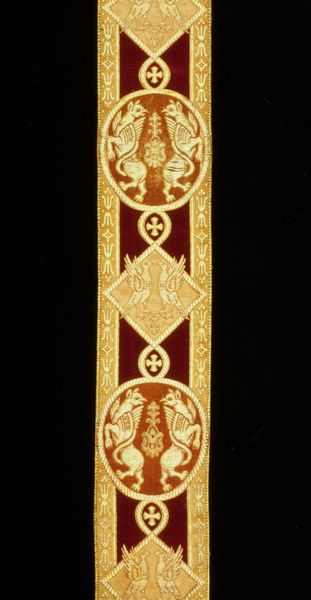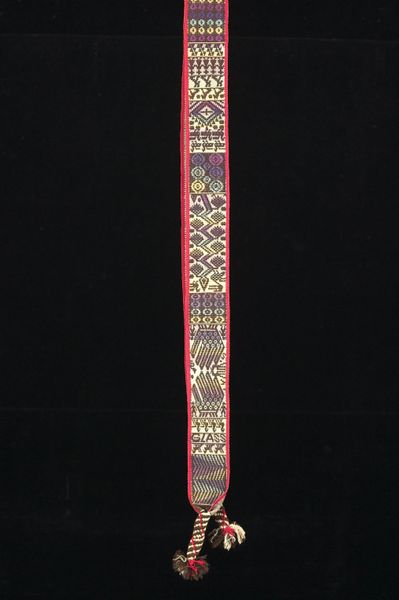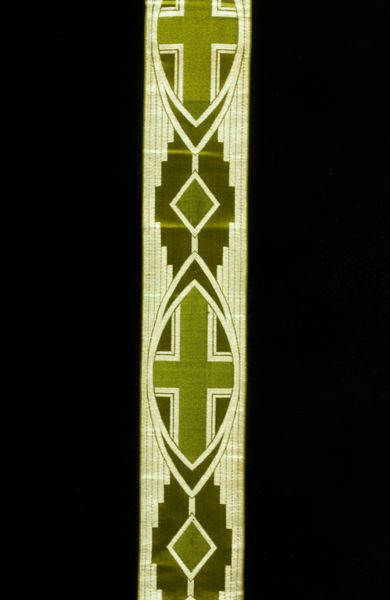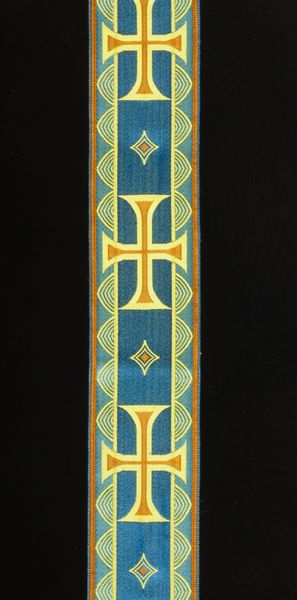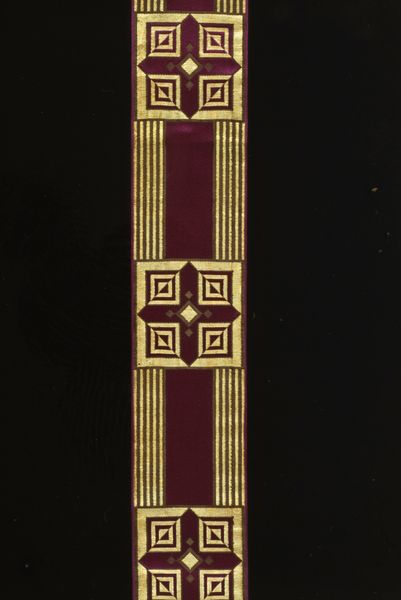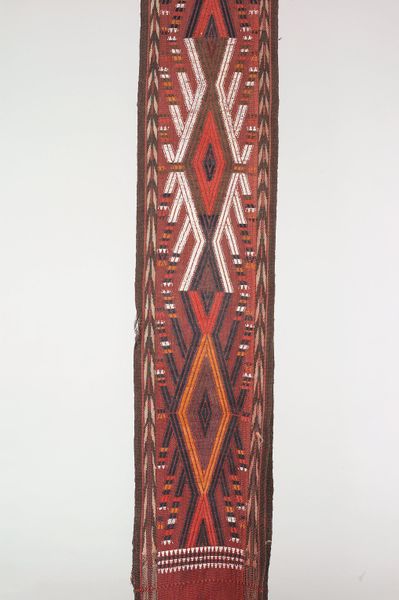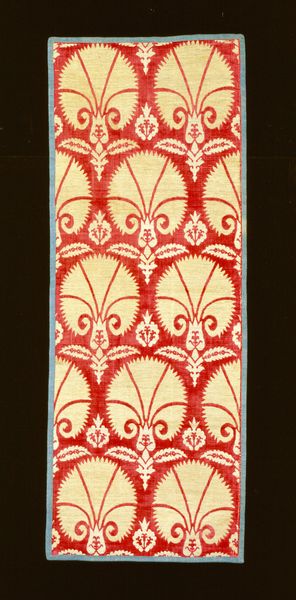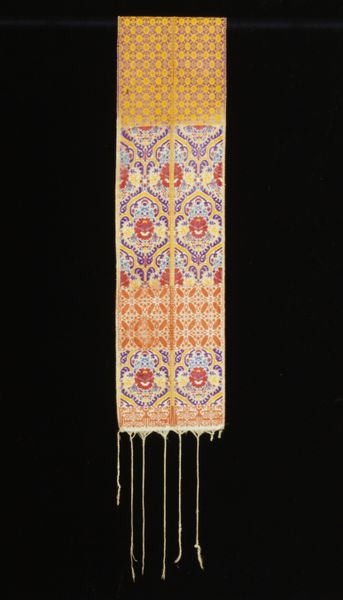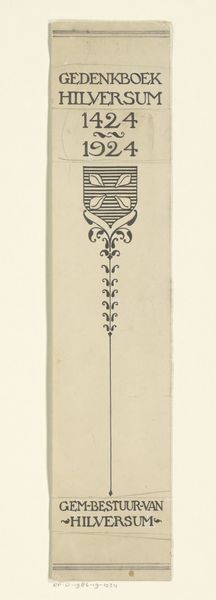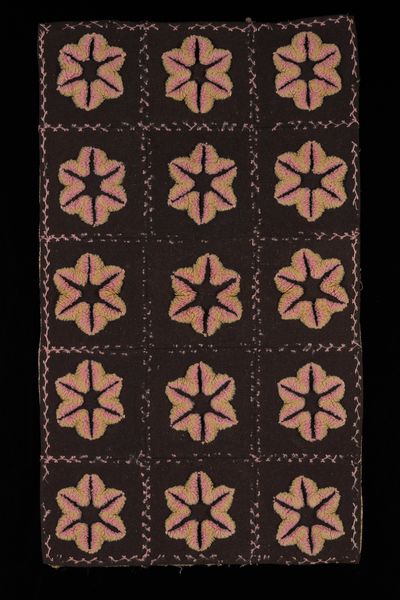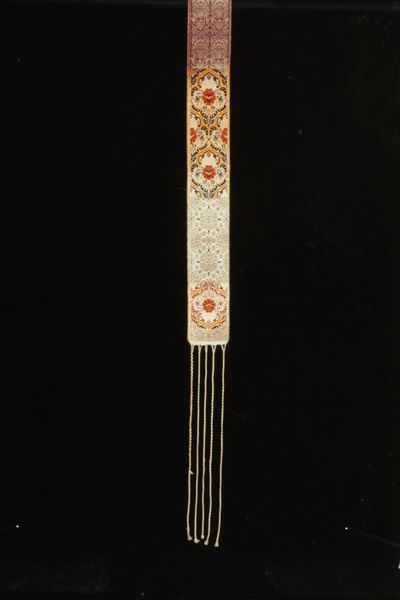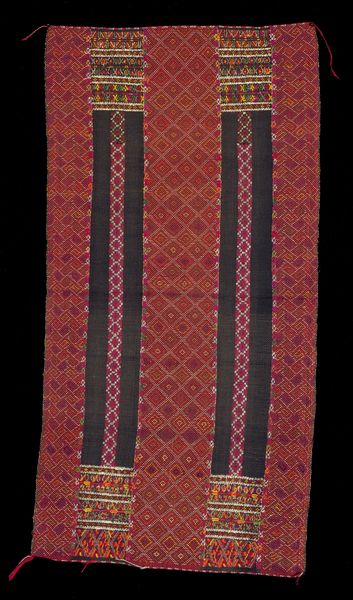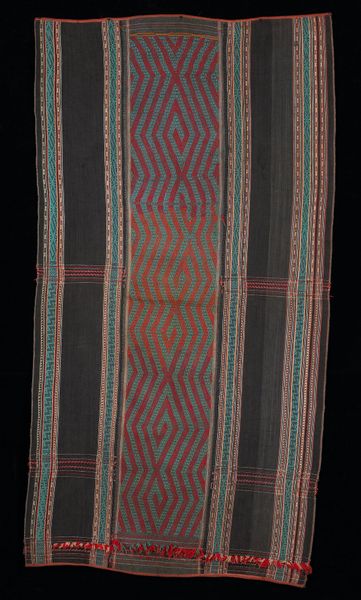
textile
#
textile
#
geometric
#
decorative-art
Dimensions: 3 1/4 x 21 1/4 in. (8.26 x 53.98 cm)
Copyright: Public Domain
Curator: Let's turn our attention to "Trim," a textile work attributed to the Sisters of the Order of St. Benedict, created circa the 20th century, and currently residing here at the Minneapolis Institute of Art. Editor: The first impression is rather striking, isn't it? The combination of deep purple and brilliant yellow create an almost regal aesthetic. There is something very formal and geometric in the patterns. Curator: Yes, precisely. Note how the artist employs repetitive geometric motifs, creating a structured composition that emphasizes symmetry and balance. The shapes create a visual rhythm that pleases the eye. The contrast between light and dark highlights the precision of the shapes. Editor: That precision, though, also speaks to ideas of craft, of domesticity and of women's work throughout much of the 20th century. Given that it comes from an order of Benedictine nuns, doesn’t this geometric ornamentation and careful execution resonate with a life of devotion, skill-building, and the hidden labors performed by women of faith? Curator: It's an intriguing proposal. Perhaps there are interpretations of the materials in relation to structure and cultural value. It prompts questions around craft and structure versus perceived fine art, or design. Is there symbolic resonance achieved here, considering this was constructed by religious women? Editor: Absolutely! And perhaps we consider how gender and identity influence production of these items. Where do these aesthetics meet in an intersectional framework of faith, and of course, womanhood? These types of textiles speak of lineage and memory for this Benedictine order. Curator: I find myself now considering the function of this piece. Clearly utilitarian but the emphasis on the design also elevates it beyond a purely practical realm. I'm curious to learn more about the order's design process to perhaps illuminate their aesthetic and creative intent. Editor: Indeed, it encourages us to think about the communities, social systems and human beings responsible for these textiles in all of its inherent intersectional meanings. It opens discussions about identity, memory, material, production, faith, and womanhood as they manifest. Curator: This has been a really insightful look at the ways our frameworks shift the perspective and, indeed, our understandings and valuing of art. Editor: Thank you, yes. It certainly challenges and enriches how we understand art's power as it intersects the world of faith, artistry, design and craft!
Comments
No comments
Be the first to comment and join the conversation on the ultimate creative platform.
